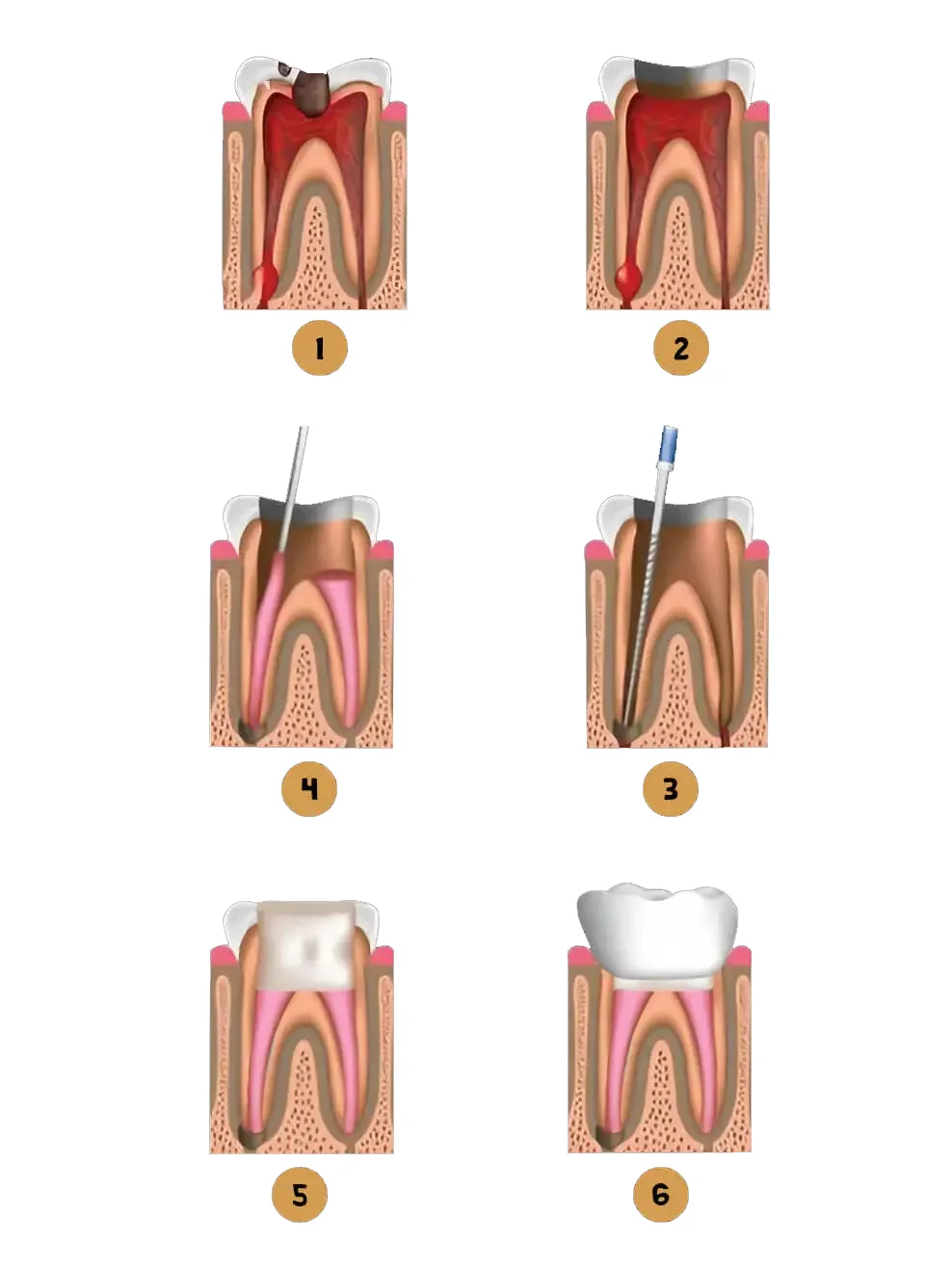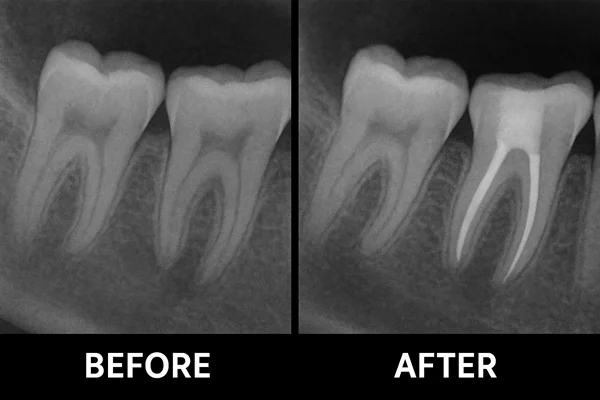What is a Root Canal Treatment?


When do you need a Root Canal Treatment?
- Tooth decay that reaches the nerve
- Persistent toothache or sensitivity
- Infection or swelling around the tooth
- Cracked or injured tooth
Benefits of getting
a Root Canal Treatment
Preserves your natural tooth and avoids extraction
Eliminates infection and protects surrounding teeth
Relieves severe tooth pain effectively
Restores full chewing function and tooth strength
Let’s take you through the
procedure at Stoma Dental Care

- On the initial visit to the Stoma Advanced Dental Care dental, our endodontist will conduct an X-ray oral examination for your teeth to determine the extent of the infection
- Then using local anaesthesia, we will numb the area around the affected tooth and remove the decay in the tooth.
- The infected tissue inside the tooth is carefully removed and the canals are cleaned and shaped.
- The cleaned canals are filled and sealed to prevent further infection.
- Finally, a crown or filling is placed to restore the tooth’s strength and function.
Post treatment care
- Avoid chewing on the treated tooth until restored
- Take prescribed medications as directed
- Maintain good oral hygiene
- Attend follow-up appointments

Single visit appointments
- Saves time with just one appointment
- Relieves pain quickly
- Preserves your natural tooth
- May not be suitable for severely infected or complex teeth
- Slight post-treatment sensitivity is possible
- Requires proper follow-up and restoration
Re-RCT
Re-RCT is performed when a previously treated tooth exhibits signs of persistent infection, inadequate healing, or new issues. The procedure is similar to the initial root canal treatment but involves removing existing filling materials and addressing the underlying problem.
Reasons for Re-RCT:
- Incomplete removal of infected tissue in the initial root canal.
- Complicated root canal anatomy not addressed in the first treatment.
- Development of new infections or decay.
- Crown or restoration failure leading to reinfection.
FAQs
A treatment to remove infection, relieve pain, and save your natural tooth.
No, it’s done under local anesthesia for a painless procedure.
Usually 1–2 visits, depending on the tooth’s condition.
Most treated teeth need a crown to restore strength and prevent fracture.
With proper care and a crown/filling, it can last a lifetime.

















